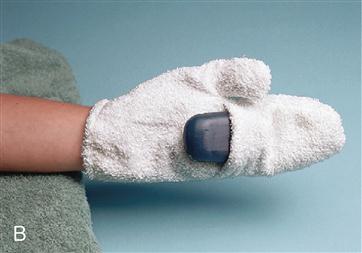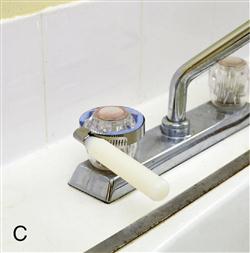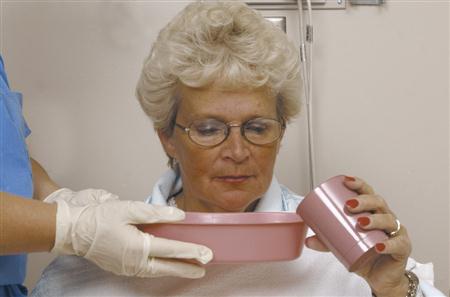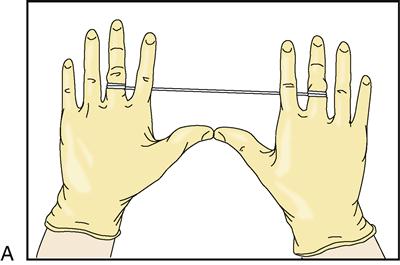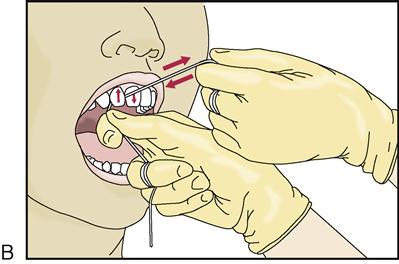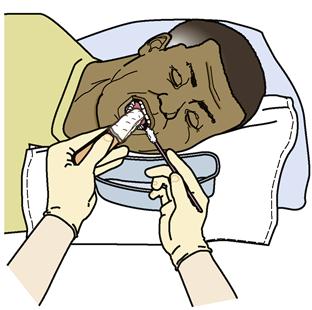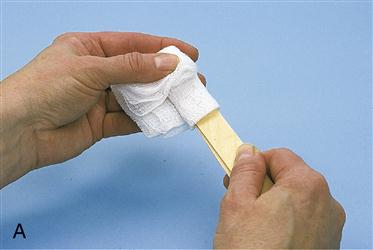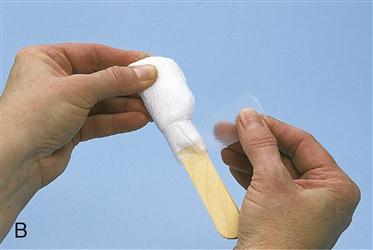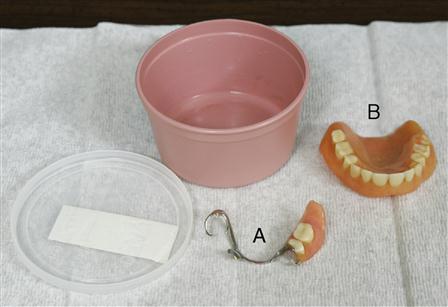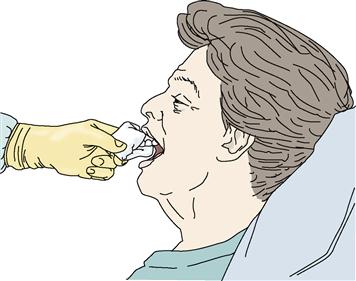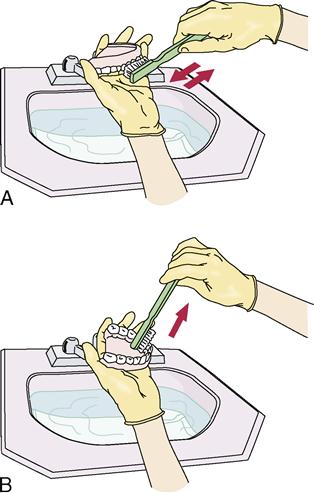Hygiene
Objectives
• Define the key terms and key abbreviations listed in this chapter.
• Explain why personal hygiene is important.
• Describe the care given before and after breakfast, after lunch, and in the evening.
• Describe the rules for bathing.
• Identify safety measures for tub baths and showers.
• Explain the purposes of a back massage.
• Explain the purposes of perineal care.
• Identify the observations to report and record when assisting with hygiene.
• Perform the procedures described in this chapter.
Key terms
AM care See “early morning care”
aspiration Breathing fluid, food, vomitus, or an object into the lungs
denture An artificial tooth or a set of artificial teeth
early morning care Care given before breakfast; AM care
evening care Care given in the evening at bedtime; PM care
morning care Care given after breakfast; hygiene measures are more thorough at this time
oral hygiene Mouth care
pericare See “perineal care”
perineal care Cleaning the genital and anal areas; pericare
plaque A thin film that sticks to the teeth; it contains saliva, microbes, and other substances
PM care See “evening care”
tartar Hardened plaque
KEY ABBREVIATIONS
| C | Centigrade |
| F | Fahrenheit |
| ID | Identification |
Hygiene promotes comfort, safety, and health. The skin is the body’s first line of defense against disease. Intact skin prevents microbes from entering the body and causing an infection. Likewise, mucous membranes of the mouth, genital area, and anus must be clean and intact. Besides cleansing, good hygiene prevents body and breath odors. It is relaxing and increases circulation.
Culture and personal choice affect hygiene. See Caring About Culture: Personal Hygiene. Some people take showers. Others take tub baths. Some bathe at bedtime. Others bathe in the morning. Bathing frequency also varies. Some bathe one or two times a day—before work and after work or exercise. Some people do not have water for bathing. Others cannot afford soap, deodorant, shampoo, toothpaste, or other hygiene products.
Many factors affect hygiene needs—perspiration, elimination, vomiting, drainage from wounds or body openings, bedrest, and activity. Illness and aging changes can affect self-care abilities. Some people need help with hygiene. The nurse uses the nursing process to meet the person’s hygiene needs. Follow the nurse’s directions and the care plan.
Some older persons resist your efforts to assist with hygiene. Illness, disability, dementia, and personal choice are common reasons. Follow the care plan to meet the person’s needs.
See Residents with Dementia: Hygiene.
See Focus on Communication: Hygiene.
See Focus on Rehabilitation: Hygiene.
Daily care
Most people have hygiene routines and habits. For example, teeth are brushed and the face and hands washed after sleep. These and other hygiene measures are often done before and after meals and at bedtime.
Weak and disabled persons need help with hygiene. Routine care is given during the day and evening. You assist with hygiene whenever it is needed. You must protect the person’s right to privacy and to personal choice.
Before breakfast
Routine care given before breakfast is called early morning care or AM care. Night shift or day shift staff members give AM care. They get residents ready for breakfast or morning tests. AM care includes:
After breakfast
Morning care is given after breakfast. Hygiene measures are more thorough at this time. They usually involve:
• Cleaning incontinent persons
• Changing wet or soiled linens and garments
• Assisting with hygiene—face and hand washing, oral hygiene, bathing, back massage, and perineal care
• Assisting with grooming—hair care, shaving, dressing, and undressing
• Assisting with activity—range-of-motion exercises and ambulation
Afternoon care
Routine hygiene is done after lunch and before the evening meal. It is done before the person takes a nap, has visitors, or attends activity programs. Afternoon care involves:
• Assisting with elimination before and after naps
• Cleaning incontinent persons before and after naps
• Changing wet or soiled linens before and after naps
• Changing wet or soiled garments before and after naps
• Assisting with hygiene and grooming—face and hand washing, oral hygiene, and hair care
• Assisting with activity—range-of-motion exercises and ambulation
Evening care
Care given in the evening at bedtime is called evening care or PM care. Evening care is relaxing and promotes comfort. Measures performed before sleep include:
Oral hygiene
Oral hygiene (mouth care) does the following:
• Keeps the mouth and teeth clean
• Prevents mouth odors and infections
• Reduces the risk for cavities (dental caries) and periodontal disease
Periodontal disease (gum disease, pyorrhea) is an inflammation of tissues around the teeth. Plaque and tartar build up from poor oral hygiene. Plaque is a thin film that sticks to teeth. It contains saliva, microbes, and other substances. Plaque causes tooth decay (cavities). When plaque hardens, it is called tartar. Tartar builds up at the gum line near the neck of the tooth. Tartar buildup causes periodontal disease. The gums are red and swollen and bleed easily. As the disease progresses, bone is destroyed and teeth loosen. Tooth loss is common.
Illness, disease, and some drugs often cause:
• A whitish coating in the mouth and on the tongue.
• Redness and swelling in the mouth and on the tongue.
• Dry mouth. Dry mouth also is common from oxygen, smoking, decreased fluid intake, and anxiety.
The nurse assesses the person’s need for mouth care. The speech/language pathologist and the dietitian may also do so.
Flossing
Dental floss is a soft thread used to clean between the teeth. Flossing removes plaque and tartar from the teeth. These substances cause periodontal disease. Flossing also removes food from between the teeth. Usually done after brushing, it can be done at other times. Some people floss after meals. If done once a day, bedtime is the best time to floss.
You need to floss for persons who cannot do so themselves. Some older persons do not floss their teeth. Follow the care plan.
Equipment
A toothbrush, toothpaste, dental floss, and mouthwash are needed. A toothbrush with soft bristles is best. Persons with dentures need a denture cleaner, denture cup, and denture brush or toothbrush. Use only denture cleaning products. Otherwise, you could damage dentures.
Sponge swabs are used for persons with sore, tender mouths. They also are used for unconscious persons. Use sponge swabs with care. Check the foam pad to make sure it is tight on the stick. The person could choke on the foam pad if it comes off the stick.
You also need a kidney basin, water glass or cup, straw, tissues, towels, and gloves. Many persons bring oral hygiene equipment from home.
See Delegation Guidelines: Oral Hygiene.
See Promoting Safety and Comfort: Oral Hygiene.
 Brushing and flossing teeth
Brushing and flossing teeth
Many people perform oral hygiene themselves. Others need help gathering and setting up equipment for oral hygiene. You may have to perform oral hygiene for persons who:
• Cannot move or use their arms
• Are too confused to brush their teeth
 Mouth care for the unconscious person
Mouth care for the unconscious person
Unconscious persons cannot eat or drink. They may breathe with their mouths open. Many receive oxygen. These factors cause mouth dryness. They also cause crusting on the tongue and mucous membranes. Oral hygiene keeps the mouth clean and moist. It also helps prevent infection.
The care plan tells you what cleaning agent to use. Use sponge swabs to apply the cleaning agent. Apply a lubricant (check the care plan) to the lips after cleaning. It prevents cracking of the lips.
Unconscious persons usually cannot swallow. Protect them from choking and aspiration. Aspiration is breathing fluid, food, vomitus, or an object into the lungs. It can cause pneumonia and death. To prevent aspiration:
• Position the person on one side with the head turned well to the side (Fig. 20-5). In this position, excess fluid runs out of the mouth.
• Use only a small amount of fluid to clean the mouth.
• Do not insert dentures. Dentures are not worn when the person is unconscious.
Keep the person’s mouth open with a padded tongue blade (Fig. 20-6). Do not use your fingers. The person can bite down on them. The bite breaks the skin and creates a portal of entry for microbes. Infection is a risk.
Unconscious persons cannot speak or respond to you. However, some can hear. Always assume that unconscious persons can hear. Explain what you are doing step-by-step. Also tell the person when you are done, when you are leaving the room, and when you will return.
Mouth care is given at least every 2 hours. Follow the nurse’s directions and the care plan.
See Promoting Safety and Comfort: Mouth Care for the Unconscious Person.
 Denture care
Denture care
A denture is an artificial tooth or a set of artificial teeth (Fig. 20-7). They are often called “false teeth.” Dentures replace missing teeth. People lose teeth because of gum disease, tooth decay, or injury. Full and partial dentures are common:
• Partial denture. The person has some natural teeth. The partial denture replaces the missing teeth.
Mouth care is given and dentures cleaned as often as natural teeth. Dentures are slippery when wet. They easily break or chip if dropped onto a hard surface (floors, sinks, counters). Hold them firmly when removing or inserting them. During cleaning, firmly hold them over a basin of water lined with a towel. This prevents them from falling onto a hard surface.
To use a cleaning agent, follow the manufacturer’s instructions. They tell how to use the cleaning agent and what water temperature to use. Hot water causes dentures to lose their shape (warp). If not worn after cleaning, store dentures in a container with cool water or a denture soaking solution. Otherwise, they can dry out and warp.
Dentures are usually removed at bedtime. Some people do not wear their dentures. Others wear dentures for eating and remove them after meals. Remind them not to wrap dentures in tissues or napkins. Otherwise, they are easily discarded.
Many people clean their own dentures. Some need help collecting items used to clean dentures. They may need help getting to the bathroom. You clean dentures for those who cannot do so.
See Promoting Safety and Comfort: Denture Care.


